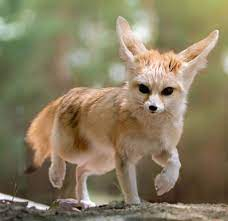Have you ever wondered how animals manage to thrive in scorching deserts or sweltering climates?
Xerophytic animals, also known as desert-dwelling species, have evolved an array of unique traits to cope with harsh conditions. One such adaptation is their ability to conserve water, a precious resource in arid landscapes. Take the iconic camel, for example, whose hump stores fat, not water as commonly believed, providing a reserve of energy for long journeys across parched terrain. With specialized kidneys that minimize water loss and the ability to rehydrate rapidly after long periods without drinking, camels are well-equipped for desert life.
Another remarkable adaptation seen in xerophytic animals is their efficient cooling mechanisms. Animals like the Fennec fox, native to the Sahara Desert, have large ears with a network of blood vessels close to the surface, allowing them to dissipate excess heat and regulate their body temperature. Similarly, the kangaroo rat, found in North American deserts, has evolved the ability to concentrate its urine and produce dry feces, minimizing water loss and maximizing hydration.
In addition to physiological adaptations, behavioral strategies also play a crucial role in surviving extreme heat. Many desert-dwelling animals are nocturnal, avoiding the scorching temperatures of the day by foraging and hunting under the cover of darkness. The sidewinder rattlesnake, a master of stealth and ambush, emerges at night to hunt its prey, relying on specialized scales on its belly to traverse hot sand with minimal contact.
Furthermore, xerophytic animals exhibit unique anatomical features that help them thrive in their arid habitats. The African elephant, for instance, has large, fan-like ears that aid in heat dissipation, while the Addax antelope boasts a light-colored coat that reflects sunlight, reducing heat absorption. Even insects like the Saharan silver ant have evolved specialized hairs that reflect sunlight and minimize heat absorption, allowing them to scurry across blistering sands without overheating.
From the majestic Saguaro cactus to the elusive Arabian oryx, xerophytic animals have perfected the art of survival in some of the harshest environments on Earth.
